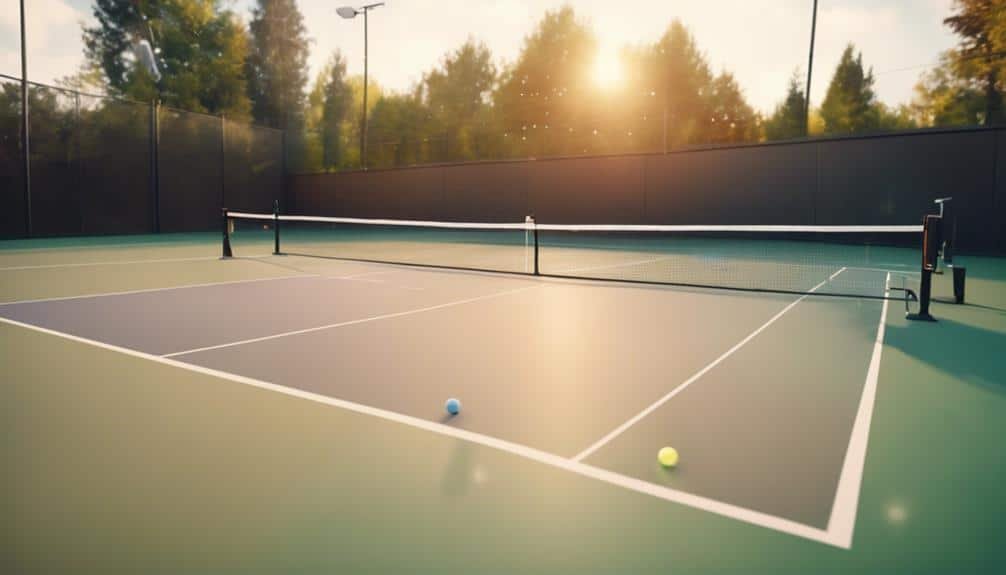The pickleball scoring revolution has transformed the sport. I've seen firsthand how rally scoring has sped up gameplay and intensified every point. It's a game-changer, with points awarded on every rally regardless of who's serving. The 'freeze rule' adds an exciting twist, preventing serving teams from winning on game point until they serve again. This shift has forced players to refine their techniques and strategies, improving serve accuracy and return placement. Tournaments are evolving, creating more level playing fields where comebacks are always possible. The community's split on these changes, but there's no denying the impact on player development and game dynamics. Dive deeper to uncover the full scope of this revolution.
Key Takeaways
- Rally scoring replaces traditional scoring, awarding points on every rally regardless of serving team.
- Matches become faster-paced and more intense, with every point carrying significant weight.
- The 'freeze rule' adds strategic complexity, preventing serving teams from winning on game point.
- Player strategies evolve, emphasizing aggressive returns and consistent serving to maintain momentum.
- Community reactions are mixed, with traditionalists resistant and others embracing the changes for accessibility.
Traditional Vs Rally Scoring
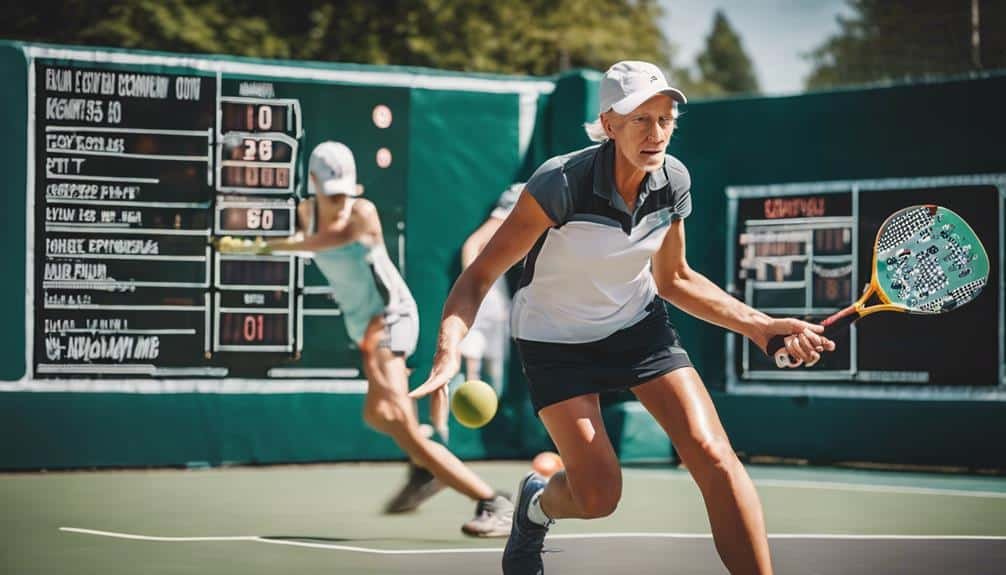
Traditional pickleball scoring and rally scoring differ in several key aspects, fundamentally changing how points are awarded and games are played.
I've witnessed the pickleball evolution firsthand, and the scoring debate is at the forefront of discussions.
In traditional scoring, I only score when serving, while rally scoring allows points on every rally.
I've noticed that traditional scoring requires me to switch positions after each point, but in rally scoring, I stay put.
The serve rules differ too; I get two serves in traditional, but only one in rally.
I've found that rally scoring speeds up the game, intensifying each play.
It's fascinating to see how these changes impact strategy and gameplay.
As the community grapples with this shift, I'm excited to be part of the ongoing pickleball revolution.
Key Differences in Scoring Systems
As I've experienced both scoring systems, I've identified five key differences that significantly impact gameplay and strategy in pickleball.
First, rally scoring offers greater scoring simplicity, as points are awarded on every rally regardless of who's serving.
Second, game longevity varies; traditional games can last longer, while rally scoring tends to produce quicker matches.
Third, serving strategies differ dramatically. In traditional scoring, I get two chances to serve, whereas rally scoring only allows one.
Fourth, player positioning changes. Traditional scoring requires constant movement between left and right courts, but in rally scoring, I stay put.
Finally, the 'freeze' rule in rally scoring adds an exciting twist, preventing the serving team from winning on game point until they serve again.
These differences create unique challenges and opportunities for players to adapt and excel.
Serve and Return Dynamics
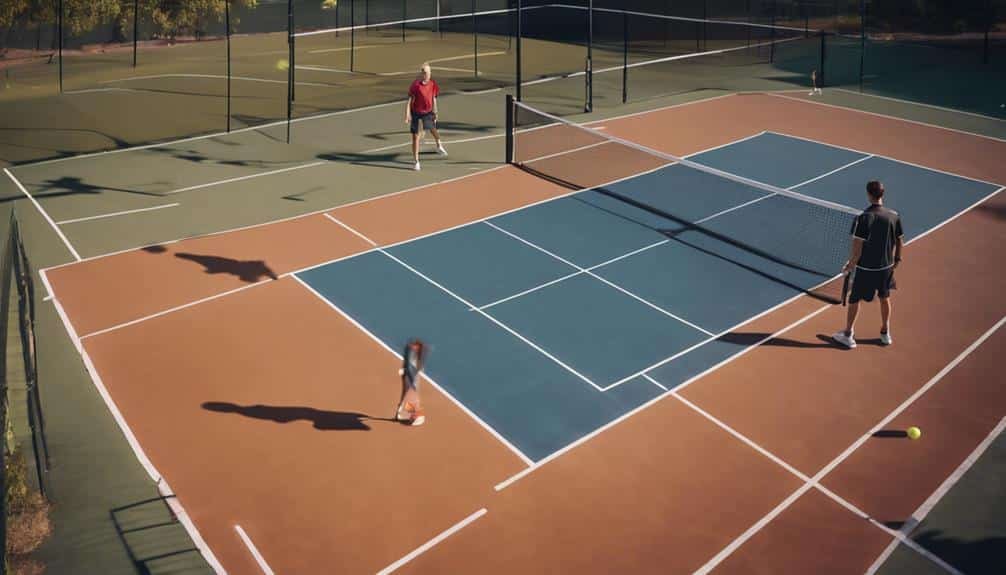
Rally scoring reshapes serve and return dynamics in pickleball, intensifying every exchange and demanding heightened focus from players on both sides of the net.
I've noticed that serve tactics and return strategies have evolved to adapt to this new scoring system. Players must now consider:
The increased pressure on each serve, as every point is crucial
The importance of aggressive returns to seize control early
The need for consistent serving to maintain momentum
The value of adaptable return positioning based on the server's tendencies
I've found that rally scoring has made the serve-return battle more strategic. Servers can't rely on a second chance, so they must balance power and placement carefully. Returners, on the other hand, have more incentive to attack, knowing they can score immediately.
This shift has created a more dynamic and engaging game, where every player feels they're constantly in the thick of the action.
The Freeze Rule Explained
The freeze rule adds a strategic twist to rally scoring in pickleball, introducing a unique endgame scenario that can dramatically alter the course of a match.
When a team reaches game point, they're 'frozen' and can only win by scoring while serving. This creates intense scoring pressure and opens up exciting comeback scenarios for the trailing team.
I've seen matches completely turn around due to this rule. It's a nail-biting experience when you're one point away from victory but can't seal the deal on your opponent's serve.
The freeze keeps both teams on their toes, knowing that every rally could be the game-changer.
As a pickleball enthusiast, I love how this rule intensifies the final moments of a game, fostering a sense of shared excitement among players and spectators alike.
It's these thrilling moments that keep us coming back for more.
Strategies for Rally Scoring
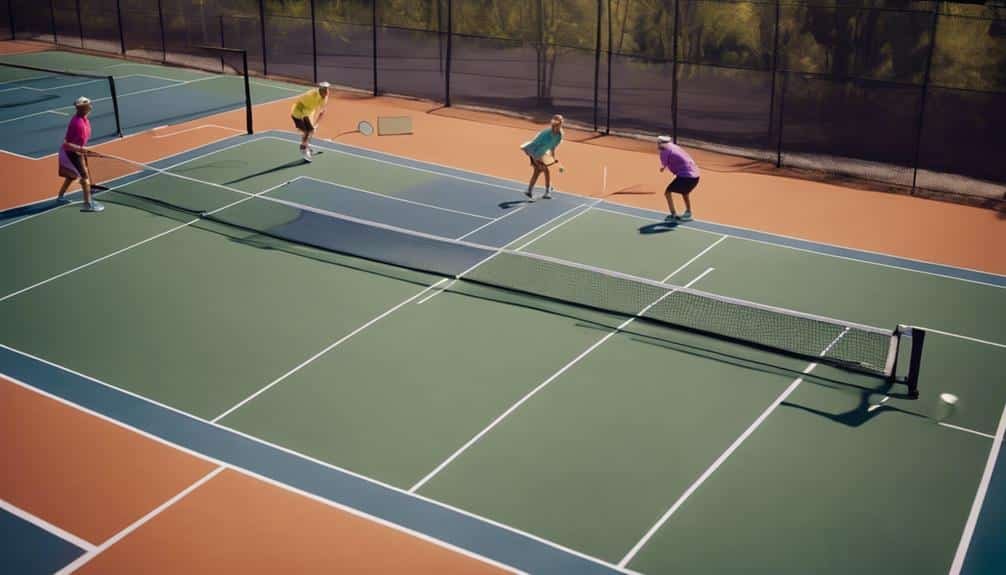
Mastering rally scoring in pickleball requires a shift in mindset and gameplay, with players needing to adapt their strategies for both serving and returning.
To develop a winning Rally Mindset, I've found these Scoring Strategy tips crucial:
Maintain constant pressure: Every point matters, so play aggressively on both serve and return.
Serve smart: Focus on placement and consistency to maximize scoring opportunities.
Stay mentally tough: Don't let lost points discourage you; every rally is a chance to score.
Adapt quickly: Be ready to switch between offense and defense with each serve.
I've noticed that players who excel in rally scoring are those who embrace the intensity and view every exchange as a potential game-changer.
Impact on Game Pace
With rally scoring, I've observed a significant acceleration in the pace of pickleball games. The fast-paced nature of this scoring system has revolutionized how we play and experience the sport. I've noticed that games are more time-efficient, allowing us to fit more matches into our busy schedules. Here's a breakdown of how rally scoring impacts game pace:
| Aspect | Impact |
|---|---|
| Point Scoring | Every rally counts |
| Serving | Single serve per side |
| Player Movement | Fixed positions |
| Game Duration | Shorter matches |
| Mental Focus | Increased intensity |
This time efficiency has made pickleball even more accessible to our community. We're able to squeeze in quick games during lunch breaks or after work. The heightened intensity keeps us on our toes, fostering a sense of belonging as we share in the excitement of each rally. It's clear that rally scoring has injected new energy into our beloved sport.
Benefits for New Players
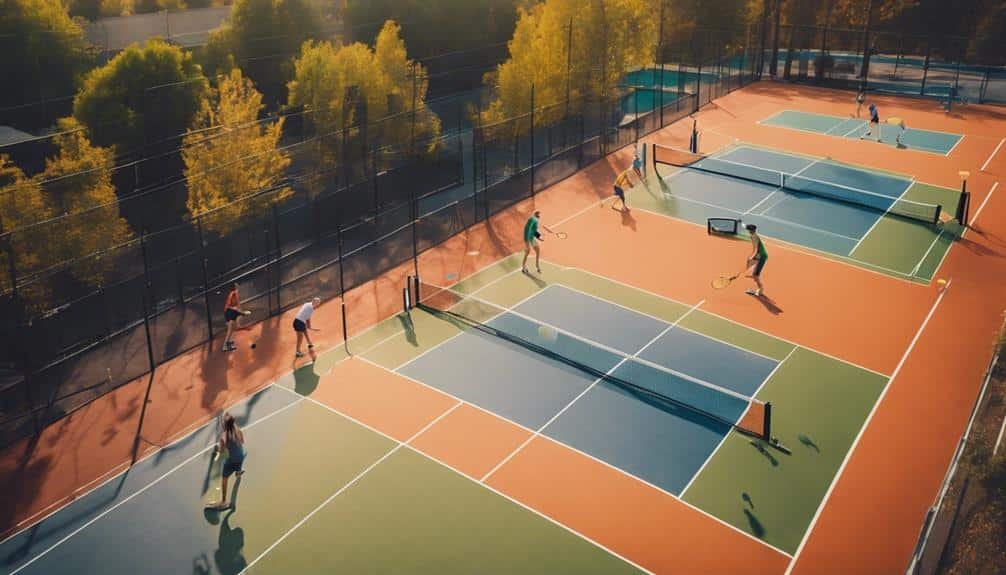
Rally scoring's rapid pace brings distinct advantages for newcomers to pickleball, streamlining their learning curve and boosting engagement from the start.
As a new player myself, I've found this scoring system offers an easy introduction to the sport, fostering social inclusion and quick comprehension.
Immediate involvement: Every point counts, keeping new players engaged throughout the game.
Simplified scoring: No need to track serving rotations, making it easier to focus on gameplay.
Faster games: More opportunities to play and learn in a shorter time frame.
Equal opportunities: Both serving and receiving teams can score, leveling the playing field.
I've noticed that rally scoring's straightforward nature allows me to integrate into the pickleball community more quickly.
It's an excellent way for beginners to gain confidence and enjoy the sport from day one.
Tournament Implications
The adoption of rally scoring in pickleball tournaments has sparked significant changes in game dynamics and strategy.
I've noticed that tournament formats are evolving to accommodate this new scoring system. Matches are becoming faster-paced and more intense, with every point carrying weight.
This shift has led to some scoring controversies among traditionalists, but I believe it's bringing fresh excitement to the competitive scene.
As a player, I've had to adapt my tournament strategies.
The pressure's on from the first serve, and I can't rely on side-outs to regroup.
I've seen top players become more aggressive, knowing they can score on both serve and return.
This new format is creating a more level playing field, where comebacks are always possible.
We're all part of this scoring revolution, and it's making our tournament experiences more thrilling than ever.
Player Skill Development
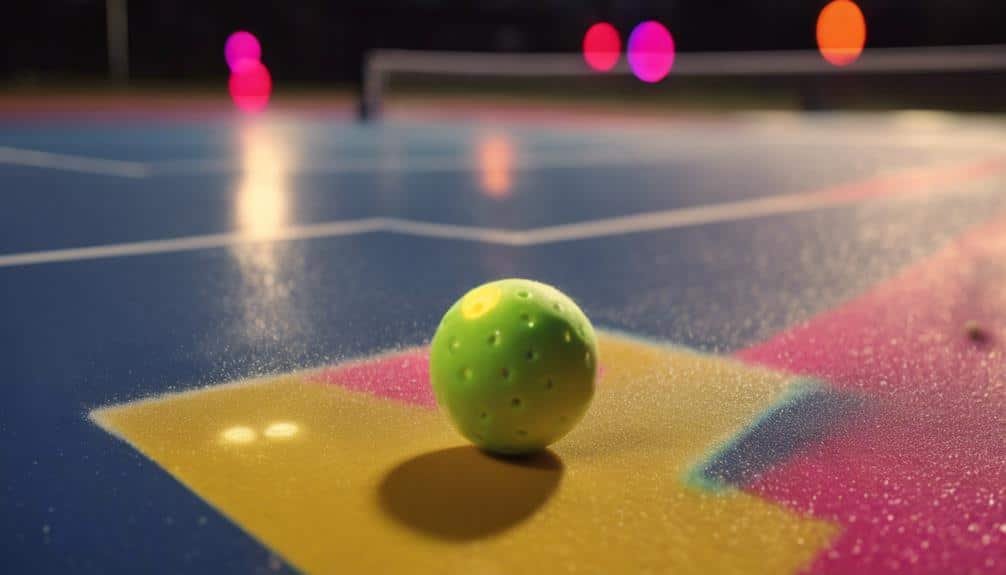
Adopting rally scoring in pickleball has significantly impacted players' skill development, forcing us to refine our techniques and strategies. This new scoring system has become a catalyst for personal growth and skill building.
I've noticed that players, including myself, are becoming more focused and intentional with every shot. We're constantly improving our:
Serve accuracy and consistency
Return placement and power
Net game reflexes and positioning
Mental toughness and strategic thinking
The increased intensity of rally scoring has pushed us to elevate our game. We're no longer relying on opponents' mistakes to score; instead, we're actively seeking ways to win each point.
This shift has led to rapid improvement in our overall skill set. As a community, we're witnessing a collective rise in the level of play, making our matches more exciting and competitive than ever before.
Community Response to Changes
Change in pickleball scoring has sparked diverse reactions within our community, with players and organizers alike voicing strong opinions on the shift to rally scoring.
I've noticed Pickleball Traditionalists leading a scoring backlash, arguing that the new system dilutes the sport's unique character. They fear we're losing our identity by mimicking other racquet sports.
On the flip side, many players embrace the change, citing faster-paced games and increased accessibility for newcomers.
Tournament organizers are split, with some praising rally scoring for streamlining events, while others worry about alienating long-time participants.
The debate has ignited passionate discussions at local courts and online forums, showcasing our community's deep investment in the sport's future.
As we navigate this transition, it's crucial to listen to all voices and find common ground to ensure pickleball's continued growth and appeal.
Conclusion
I've witnessed pickleball's transformation through rally scoring, and it's revolutionizing the game faster than a speeding smash.
It's sharpening players' skills, accelerating matches, and attracting newcomers.
While some traditionalists resist change, I'm convinced this scoring system is the future.
It's making pickleball more exciting, strategic, and accessible.
As tournaments adopt rally scoring, we'll see the sport evolve rapidly.
I'm thrilled to be part of this pickleball renaissance, watching it soar to new heights.

